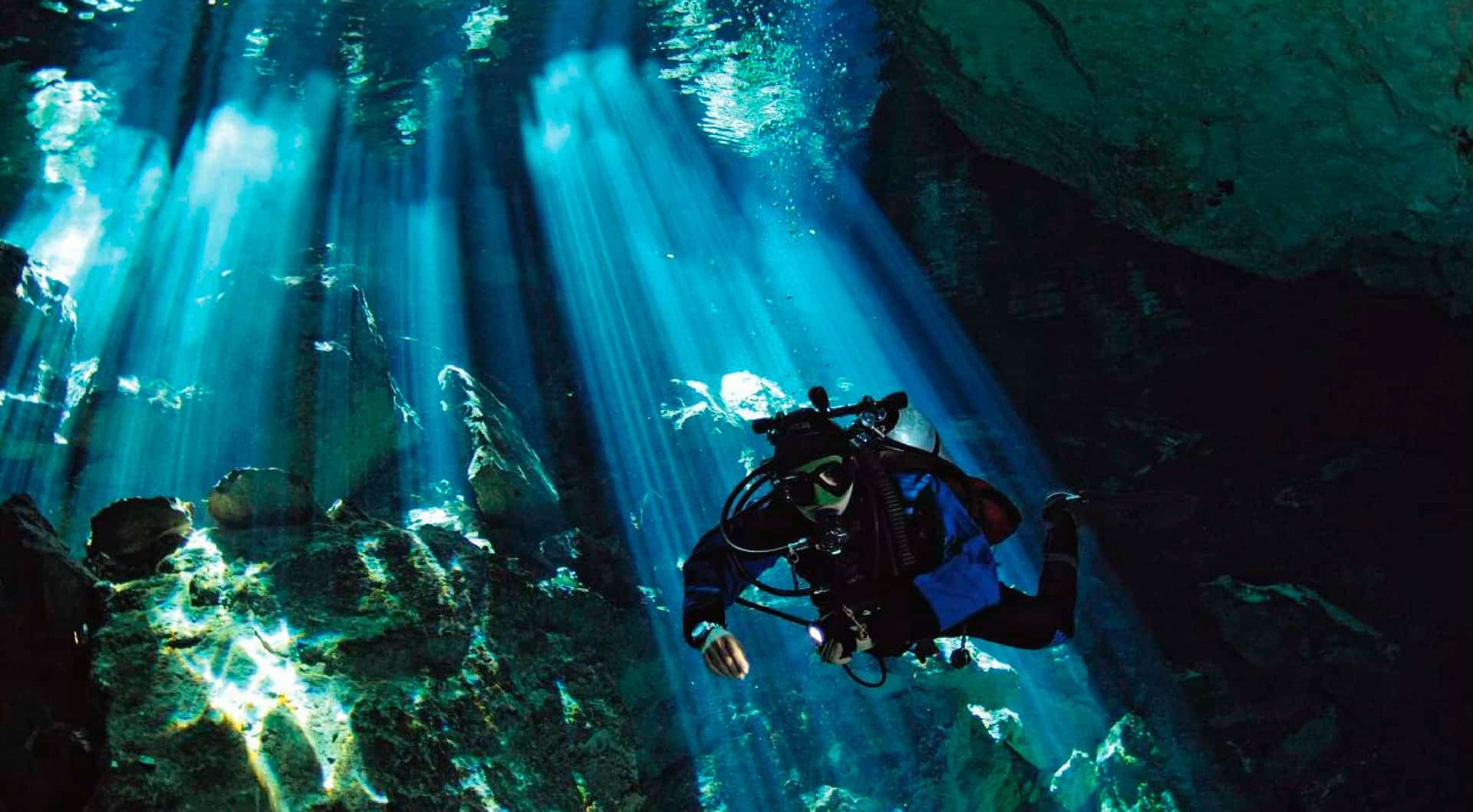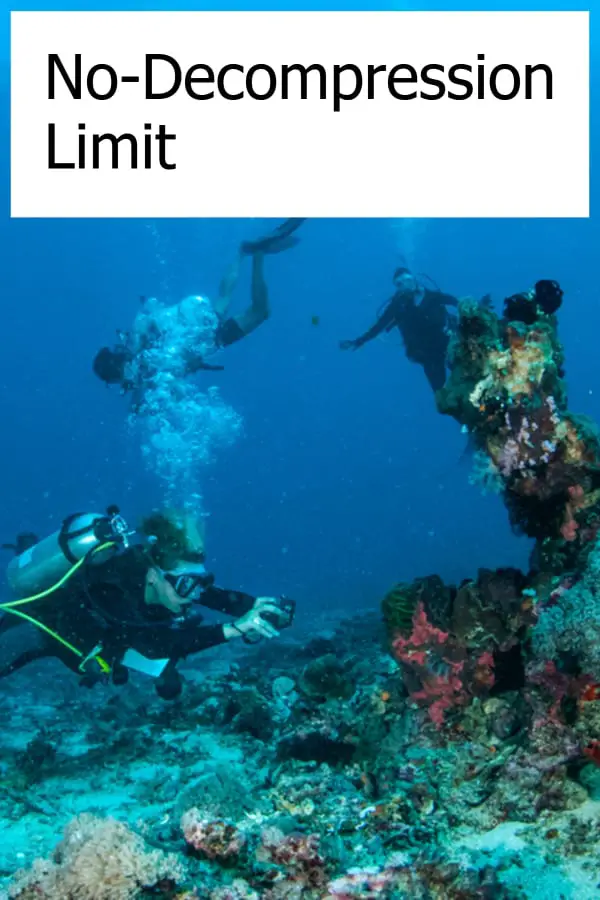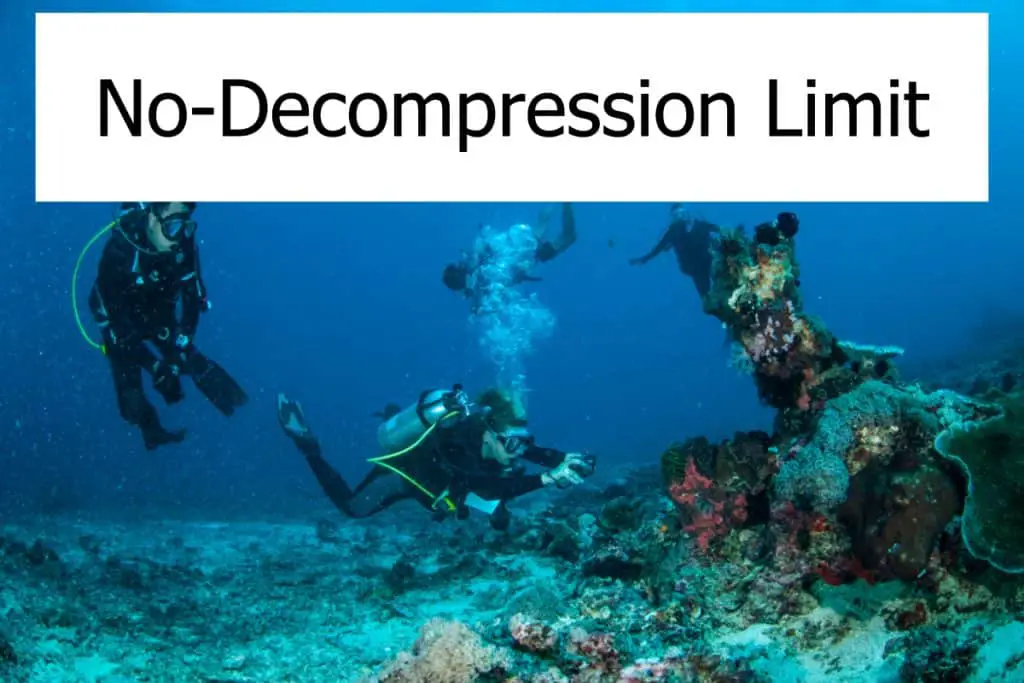No-Decompression Limit – What Exactly is it?
In very simple terms, a no-decompression limit (NDL) is the amount of time you can spend underwater without having to pause during your ascent. If you stay past that limit, you’ll have to take the extra measures to avoid decompression illness.
Of course, nothing in scuba diving is really that simple. As you probably guessed, there are a few other factors at play here when it comes to the no-decompression limit (NDL). Depth, gas mixture, number of dives in a day all have an impact on this time limit, which means that you have to plan your dive carefully.
If all of this is new to you, don’t worry. The science may seem a bit complicated, but with the help of dive tables and dive computers, you’ll be confident that your dive will be safe and stress-free and that you won’t violate any limits and run into the risk of decompression sickness by violating the no-decompression limit.
How do we determine the No-Decompression Limit?
To understand the NDL (no-decompression limit), we have to refer, once again, to Boyle’s Law. This is the law of Physics that explains the process of decompression illness. As you surely learned in your basic scuba diving course, decompression sickness is due to nitrogen dispersal in the body tissues.
The nitrogen bubbles expand during ascension. The only way to avoid this is to ascend with enough time for the body to dispel the bubbles before they start to expand.
But, this process doesn’t happen during every dive. During shorter and shallower dives, for example, you may be able to pop up to the surface without the risk of decompression illness.
That said, because decompression sickness poses such a serious threat to a diver’s safety, it’s important to be precise in your calculations when you perform a dive, specifically when you’re decompression diving.
You can’t ascend simply because you feel that you haven’t been under the water for very long. If your ascent rate is off and you’re missing a decompression stop even though you need to make one then you run the risk of ending up with decompression sickness.
And because accurate calculations are so important, the field of diving has developed reliable tools, like diving tables and dive computers to help out.

Dive Tables and Computers
For many novice divers, a diving table is quite an intimidating tool. The PADI recreational diving table, for instance, has over 27 rows and columns with enough numbers and letters to make your head spin (or swim?).
Of course, the more you learn about diving tables in your training courses and become familiar with them when planning for dives, the more they begin to make sense.
One thing that is for sure, is that this tool is extremely useful in figuring out your NDL. The data used to create such tables are based on extensive research and precise mathematical algorithms, developed by reputable sources like the US Navy, so you can be pretty certain that it’s going to give you a reliable NDL.
Another key tool in calculating NDL is a dive computer. These devices are able to track your nitrogen loading as you descend, allowing you to readjust your no-decompression limit in real-time and warn you about decompression stops, ascent rates that are too high, etc.
Dive computers often have alarms so that you can be made aware of when your time is running low or when you need to make a decompression stop when you are decompression diving. If you do go over your time, many dive computers will also go into the “deco” mode so that you can plan to make a decompression stop.
Of course, as useful as dive computers are, it’s important to make sure that you’re not only relying on your device to make decisions about your bottom time. After all, sometimes devices fail or don’t account for every factor that impacts a dive.
The safest plan is to calculate your NDL with a dive table and then supplement your dive with the computer. This way you can rest assured that you’re not missing any decompression stops and you reduce the risk of decompression sickness.
What about those other factors?
Like we said before, there are other elements at play in the NDL calculation. The most important considerations are,
Gas Mixture
If you’re diving recreationally, chances are you’re probably using air in your tank, in which case you can refer to a standard dive table for your calculations. However, gas mixtures like Nitrox are going to have an impact on your NDL.
These mixtures actually increase your bottom time, so that you can stay down longer without having to worry about decompression illness. It’s important to find a dive table that is specific to your gas mixture.
Number of Dives
This one may not be as obvious as the type of gas you’re breathing, but it’s equally as important. That’s because multiple dives in one day increase your risk for decompression illness, meaning that you have to recalibrate your NDL after each dive.
Luckily, many dive tables include a section for multiple dives, so that you can make sure to plan ahead if you plan on going underwater more than once.
Physiological Differences
Of course, every diver is different and it can be difficult to predict an individual’s susceptibility to decompression illness. To account for the variation, most dive tables and computers will err on the side of caution.
As you become more experienced in diving, you will start to gain more of an understanding of your own limitations, though it’s always important to give yourself a margin of error just to be safe. This is also a reason why it’s crucial for you to calculate your own NDL instead of just following your diving buddy’s limit.
What if you go past the limit?
If for some reason, you don’t start ascending before your NDL, you’ll have to make the necessary decompression stops to dispel the nitrogen. Even if you didn’t go too far over your limit, it’s a good idea to make a stop because of that margin of error on the dive table.
When do you need a Decompression Stop?
When you are diving within the NDL limits results in that you do not have to perform any decompression stops. That means that you do not have to perform any stops when ascending from your dive. You certainly have to stick to the ascent rate that your dive computer determines.
Often it is quite easy to exceed the No-Decompression Limit during a dive. In that case, you will have to perform a decompression stop. This provides your body the chance to off-gas so you can safely surface. You should always account for such a stop when planning your dive to make sure you have enough gas to perform a deco stop.
If you have to perform a decompression stop but you don’t adhere to it, then you risk contracting decompression sickness. This can lead to serious health issues or even death. If at all possible, it’s always best to not ignore if your dive computer or dive tables require you to have a deco stop!
You can read more about decompression sickness or the bends at: The Facts about Decompression Sickness
To sum it all up
What you’ve probably taken away thus far is how important it is to calculate a reliable NDL and then stick to it. Because NDLs tend to be calculated according to the average diver, pushing yourself right up to the limit is dangerous.
Instead, make sure that you’re giving yourself a safety cushion by adding safety stops and decompression stops when and if necessary.
Clearly, it’s a better idea to be a bit conservative with your NDL than to extend your dive and putting yourself at risk for decompression sickness.


